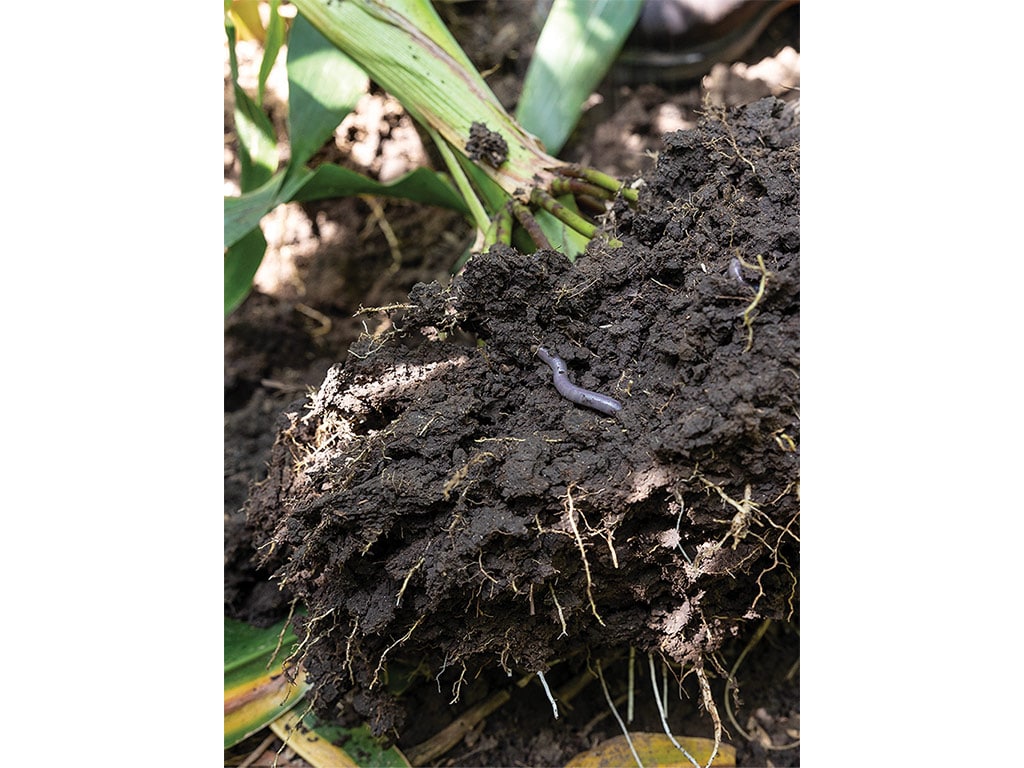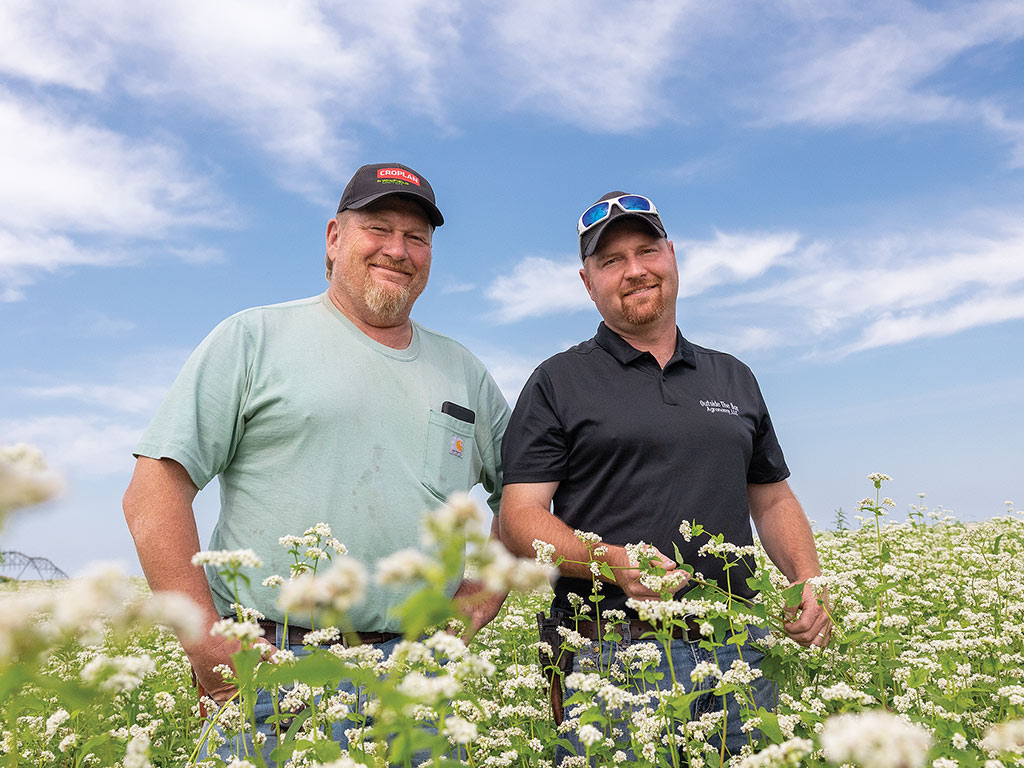Farm Operation, Sustainability January 01, 2024
Against the Grain
.
How a Nebraska farmer steers away from conventional corn and soybeans.
As a sales agronomist for a local cooperative, Junior Pfanstiel had created many profit and loss statements for his customers for which the profit per acre was scant.
The McLean, Nebraska, farmer has shifted his operation from one in which maximum corn and soybean yields were the priority, to a system that relies on no-till and cover crops to reduce his reliance on synthetic fertilizers, and all but eliminating the need for commercial herbicides, fungicides, and insecticides.
His goal is simple in theory: using cover crops and roller crimping to control weeds, produce nitrogen, and improve soil health.
He's no stranger to thinking differently. Years ago, he began intercropping, or alternating planting strips of corn and soybeans in the same field. A diligent student of agronomic practices, he studied and field-tested corn hybrids that would produce maximum yield by being placed on the outside rows, where light interception was greatest.
Yet when nitrogen prices climbed higher than a buck a pound that winter, his passion for bin-busting yields changed.
"That's where I drew the line. And I went to 100% soybeans the following year," he says. "Now, it's almost a game of how much can we cut back."
Above. Years of rye cover crops have led to massive earthworm populations. Gene Pfanstiel, Junior's father, is a big proponent of cover crops. Junior is the third generation to farm in north central Nebraska.
Cover crop convert. During his sales agronomy job, Junior became a cover crop believer. His most progressive customers were participating in an NRCS (Natural Resources Conservation Service) cover crop program. Junior did the same, and soon noticed how cover crops protected the soil.
After a seven-plus inch deluge a few years ago, Junior walked his fields, noting how little mud his shoes picked up. Most of the rain had soaked into the residue and soil; what little ran off was clear. Water rushed off the neighbor's fields, taking topsoil and fertilizer with it. "It was an eye opener," he recalls.
He also noticed cover crops suppressed marestail and other problem weeds. Now, he aims to keep the ground covered with a growing crop year-round.
He constantly tests new ideas. He's one of the few area farmers to grow winter wheat; a few years ago, he tried double-cropping yellow corn, with some success. He also plants a cover crop mix of radishes, sunn hemp, rye and sorghum sudan after wheat harvest, the combination of which provides nitrogen, weed suppression and can break up compaction.
He interseeded fava beans into forage sorghum last summer, intending to produce nitrogen for the 2024 corn crop; followed shortly by rye, hairy vetch and clover. He is so convinced of the value of cover crops that he bought a hi-boy sprayer with which he can interseed cover crop seeds into standing corn. He does custom seeding for other farmers with his business, Outside the Box Agronomy.
"Working with the soil and soil microbes is the future of agriculture," he says. "We know absolutely nothing about what happens below ground. It's completely unchartered territory."
Junior's friend, Iowa farmer Zack Smith, says a growing number of farmers are thinking differently about commodity agriculture.
"It's refreshing to see farmers attempt to think outside of the box, when they could be safe and secure operating within the confines of commodity agriculture," says Smith, who developed the Stock Cropper system of grazing interseeded cover crops using an autonomous pen system for multiple species of livestock.
"Farming has evolved to serve shareholders rather than farmers, the land and consumers, and there's an underswell of folks who are hungry to be inspired by Junior's work and vision." ‡
Read More

AGRICULTURE, SUSTAINABILITY
A Sweet Spot
Wyoming farmers work together to keep mortgage-making sugar beets in their rotation.

FARM OPERATION, SUSTAINABILITY
Sebastien's Quest
Quebec farmer pushes new frontiers.



